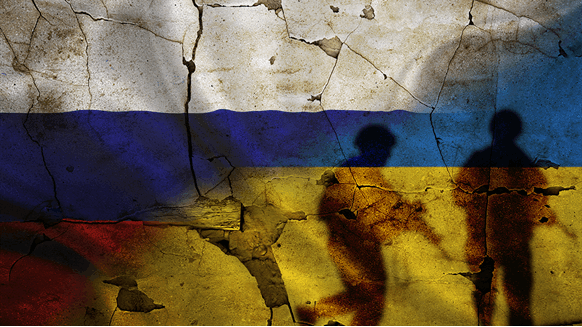In a BMI report sent by Fitch Group to Rigzone on Wednesday, BMI analysts said the Ukrainian invasion of Kursk is causing volatility in gas prices.
“Energy markets reacted quite sharply to Ukraine’s invasion of Kursk. The European gas benchmark, the Dutch TTF front-month contract, rose from EUR 35.65 ($39.34)/MWh on August 5 to over EUR 40 ($44.14)/MWh on August 8,” BMI analysts noted in the report.
“Potential access to the Sudzha gas transit link poses the risk of disruption to gas supplies should Ukraine attempt to hinder Russian revenue streams,” they added.
“Although the Sudzha Gas Transit Corridor makes a relatively small contribution to Russia’s overall hydrocarbon revenues, it nevertheless plays a significant role in the regional energy transit network (five percent of EU gas consumption) and therefore creates uncertainty for the entire European gas supply,” they continued.
In the report, BMI analysts highlighted that on August 6, Ukrainian forces launched a cross-border incursion from Sumy Oblast in Ukraine into Kursk Oblast in Russia.
“This operation represents a strategic departure from the defensive posture that Ukraine was forced to adopt due to disruptions in aid deliveries and which allowed Russia to maintain the initiative since November 2023,” the analysts said in the report.
“Unlike previous limited and disorganized cross-border attacks by pro-Ukrainian forces, this large-scale incursion has significantly influenced the perception of the Russian military and the public,” they said.
Due to the ongoing unstable situation, the details of territorial control in Kursk Oblast remained unclear, analysts said.
“Ukrainian forces have concentrated their efforts on the small town of Sudzha, which has a population of around 5,000. Geolocated images from August 11 confirmed activity in the western and southern parts of Sudzha and in nearby Guevo,” the analysts said.
“Central and eastern Sudzha remain contested, with front lines constantly shifting. In addition, there are unconfirmed reports of Ukrainian advances westward and northwestward into Kursk Oblast, including areas such as Snagost, Kremyanoye and near Olgovka,” they added.
“The effects and developments of this incursion continue to unfold and mark a significant escalation of the conflict,” the analysts warned.
The analysts highlighted in the report that natural gas prices for the TTF front-month ending August 13 had “cooled off after the initial surge following the start of the Ukrainian offensive.” They forecast in the report that “prices are likely to continue to decline… due to several factors.”
“First, there are currently no signs that Ukraine is trying to disrupt the flow of Russian gas from the Sudzha link through Ukraine, especially given that Ukraine also receives transit fees, which alleviates some of the concerns about supply risks that had previously driven up the price,” the analysts said in the report.
“In addition, Europe will start the heating season with significant gas stocks (forecasts suggest they will reach 90 percent by the end of August) and, finally, gas supplies from Norway, the EU’s largest pipeline gas supplier, will remain stable,” they added.
“We therefore continue to expect Dutch TTF prices to average EUR 30 ($33.09)/MWh in 2024. If there are signs that there may be disruptions to gas supplies from Russia, we will likely revise our forecast upwards,” they continued.
In a Standard Chartered Bank report sent to Rigzone late Tuesday by Paul Horsnell, head of commodities research at Standard Chartered Bank, analysts at the bank, including Horsnell, stressed that European gas prices had “risen sharply over the past week following the invasion of Ukrainian troops into Russia’s Kursk Oblast.”
“Market concerns are focused on the Sudzha metering station, the point from which Russian gas enters the Ukrainian pipeline system and is distributed mainly to consumers in Hungary, Slovakia and Austria,” the analysts stressed in the report.
“The Sudzha measuring station is located about 200 meters from the Russian-Ukrainian border and about 6 km from the town of Sudzha. The transit flow is normally about 40 million cubic meters per day (MMcmpd)… so far there have been no interruptions, with a transit of 42 MMcmpd on August 13,” they added.
The biggest danger is damage to infrastructure, Standard Chartered analysts said in the report. They added: “Some satellite images circulating on social media appear to show the destruction of the Sudzha station administration building and damage to one of the four measurement units.”
“Although the extent of the damage is difficult to determine, we believe these images have further increased nervousness among gas traders,” the analysts said in the report.
The flow of water through Sudzha is expected to dry up by the end of 2024 in any case, Standard Chartered analysts warned in the report.
“In June, Ukraine announced that it would not seek an extension of the transit agreement with Russia when it expires in December,” the analysts said.
“The market is therefore reacting to the potential loss of just four and a half months of production, or around 5.8 billion cubic metres. However, we do not believe that either party to the conflict will want to stop production before the agreement expires,” they added.
“If Ukraine wanted to stop transit through its territory, it would not need control over Sudzha, and Russia seems to see the continuation of refugee flows to Hungary and Slovakia as an opportunity to exert foreign policy influence,” they continued.
To contact the author, send an email [email protected]

